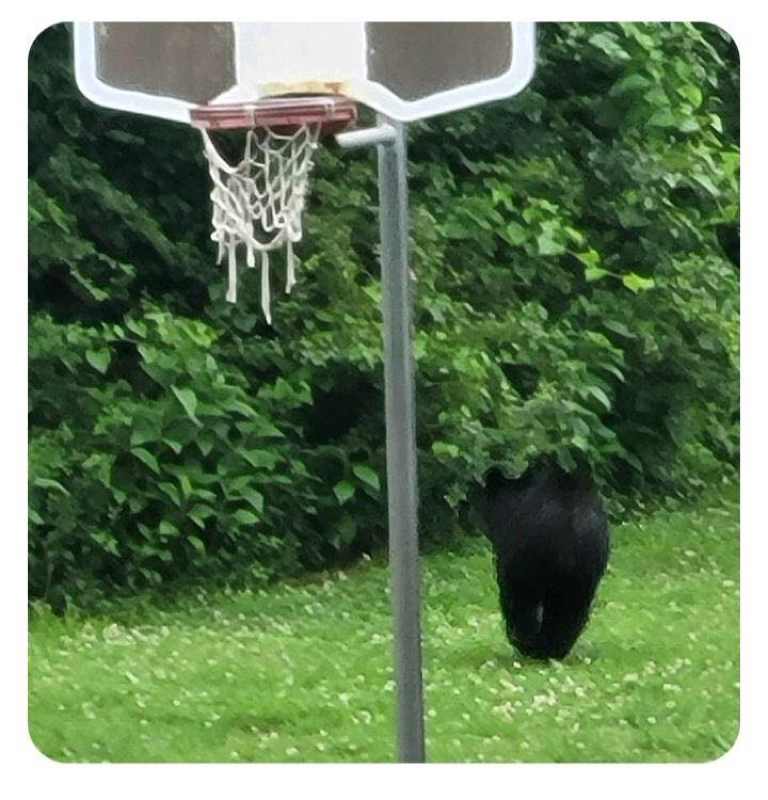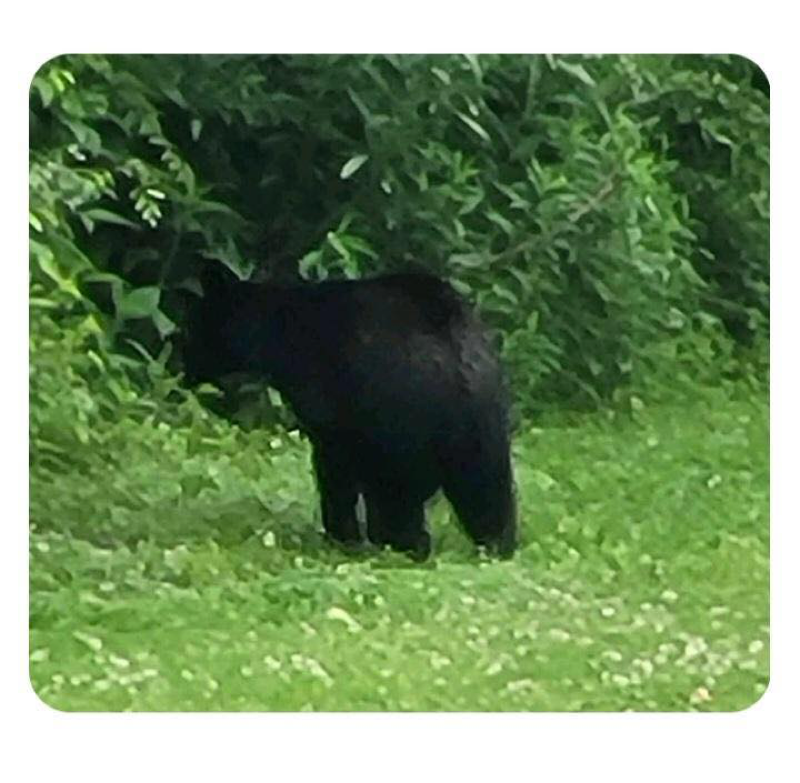Local bear sightings are on the rise again
CLAY COUNTY-Black bear sightings are again on the rise here, as early-summer activity by the animals continues to be commonplace all over the county in the past few years.
Proof of the visitors came last week when photos of one passing through Dale Hollow Damsite Campground were captured by on-site staff.
Due to the common occurrences in the region, the Tennessee Wildlife Resources Agency (TWRA) recently circulated a news release on the topic, which explained they receive an increase in calls regarding black bears in the spring and early summer.
Local sightings this time of year have been prevalent for over a decade now and were first reported on a yearly basis by the HORIZON beginning back in 2015.
At that time, one was spotted swimming Dale Hollow Lake and the local TWRA officer offered thoughts on their origins.
“The bears we are seeing here and in surrounding areas are transient bears,” the officer said in the June 24, 2015 edition of the HORIZON. “We have seen them travel into the area on a regular basis for the last five to six years since they were reintroduced into Big South Fork back in the 1990s.
“They have expanded their range, but are most likely not residents. They return to where they came from eventually.”
In the same article, the officer cautioned the public to use common sense if they come across a bear.
“They don’t really pose a threat if you use common sense and don’t try to get too close,” he explained. “If you see one, don’t run towards it and try to take pictures of it, and, for sure, don’t try to feed them.
“Keep a safe distance at all times.”
TWRA Black Bear Coordinator Dan Giibbs also spoke about the uptick in recent sightings outside of the Smoky Mountains where the population is prevalent.
“Black bears are one of Tennessee’s state treasures and it’s everyone’s responsibility to keep them wild and keep them alive,” Gibbs said. “Bear management experience has shown that bears attracted to human food sources, or that are deliberately fed by humans, have a relatively short life.
“Our bear population is approximately 5,000-6,000 statewide, with the majority found east of Cookeville,” Gibbs continued. “We are getting more reports from Middle Tennessee each year with an occasional sighting from West Tennessee.”
TWRA receives more than 1,200 bear conflict reports annually, which does not include reports from local, state and national parks, police departments, and other agencies.
According to TWRA’s bear-conflict reports, the summer travel season is also when bears in Tennessee become more active and 80% of the calls are related to bears accessing trash.
The agency also explained many bears spotted this time of year are juveniles.
“Bears just over a year old, leave their mothers and often move into new, unknown territory in search of food, water, and shelter,” the TWRA news release said. “Outdoor activities such as yard work, hiking, and camping also increase the potential for humans to spot a bear.
“Humans unknowingly attract and provide for wild animals including black bears, around their homes,” the release continued. “Attractants include birdfeeders, trash, birdbaths, livestock feed, and petfood bowls with leftover food.
“These things can unintentionally lure bears and other unwanted wildlife closer to people. Following a few guidelines can decrease negative interactions and help deter bears.”
“It’s important to recognize that when a bear finds its way into a neighborhood, it will also find its way out,” TWRA Black Bear Support Biologist Janelle Musser explained. “Bear dispersal happens anywhere black bears live and this is a normal occurrence across the U.S.
“We want to ensure people are safe and ask them to follow some guidelines.”
Other advice was also offered concerning black bear encounters.
“Never follow a black bear,” the news release said. “Give wildlife plenty of room to vacate an area.
“Following an animal for photos can unintentionally put wildlife or humans in harm’s way.
“Never intentionally feed bears and look for unintentional food sources around homes.
“Trash, birdfeeders, unpicked garden vegetables, greasy grills, livestock feed, and outside petfood can attract bears.
“Secure food, garbage, recycling, and grills in areas not accessible to bears and other wildlife. Place trash in bearproof containers and place out the morning of pick up.
“Alert neighbors to bear activity and make noise when exiting your home to alert wildlife and provide time for them to move away.”


LEISURELY STROLL-A black bear was captured on film strolling through the campground below Dale Hollow Dam last week. (photos courtesy Facebook.com/dalehollowlake)
